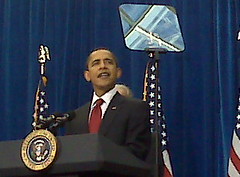
If you're considering buying land to build a home using green-building concepts. Today's building news might scare people off from building. With all the bad news about housing and everyone seeing "red" - it happens to be one of the best times I've ever seen to build! It also is a very good time to start a green home-construction project, based on several factors: Land prices are cheaper, the number of certified green contractors out there is growing and green is going mainstream as global warming and energy issues are on the front burner. Most General Contractors are also "sharpening their pencils" more just to stay in business. Additionally, federal tax incentives for some new-home construction elements have recently tripled following the recent passage of the stimulus package.
Instead of the previous 10-percent incentives offered, you can now write off 30 percent of the costs of buying and installing solar panels, solar water heaters, fuel cells and small wind-energy systems and geothermal heat pumps. There are dollar caps on some of these credits. See the
Environmental Protection Agency website for the latest information.

Moreover, it's pretty clear that the latest green heating and cooling systems typically pay for themselves in energy savings over several years. If you're in North Carolina, you can go to the
North Carolina Solar Center and click on 2008 Tax Forms for the latest NC Tax Guidelines. Depending on your situation, you could get up to $10,500 tax credit on a photovoltaic system, $3,500 on Active or Passive Solar systems or $1,400 for a solar water heating system in the same year. Active or Passive Solar systems receive tax credits depending on how they are constructed and designed. You find experts at the
North Carolina Professional Directory of renewable energy professionals.
Several other states are offering additional green tax credits as well. Builders can also get tax credits for constructing energy-efficient new homes and should be able to pass some of those savings on to you indirectly. You can also check out the
DSIRE Database of State Incentives for Renewables & Efficiency. Of course, you can go as green as your imagination and budget allow, ranging from the use of solar energy, natural lighting, energy-efficient appliances and low-emission paints to radon-resistant construction, resource-efficient landscaping and use of recycled or salvaged, locally processed building materials. It's important to check out your local building ordinances to see what is allowed in your area. Most municipalities have become far more progressive in this area.

But be wary. Some contractors instantly mark up a green project significantly without justification merely because people expect to pay more. Carefully screen your contractors. The United States Green Building Council's site (
www.usgbc.org) has a rating system for promoting the design and construction of high-performance "green" houses that also features builder resources, green-certified contractor lists and a green-home guide. Also go to the
Green Home Guide website and click on "resources" for availability of local, state, federal and utility incentives. Another organization,
Build it Green, promotes green practices in California but also features universal guidelines and checklists that may help.
Be sure to keep up to date on what's being offered. By the time you start construction, there may be even more green incentives available.
A Green Home Begins with
ENERGY STAR Blue.
It's a Great Time To Go Green!
 Image by aflcio2008 via Flickr
Image by aflcio2008 via Flickr See more info on saving tax dollars when you build or remodel.
See more info on saving tax dollars when you build or remodel.




